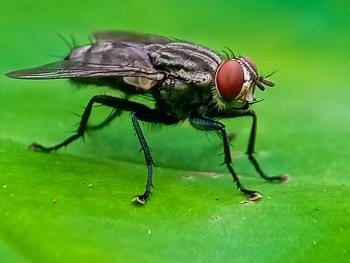
Considerations for the use of sedation for feline veterinary visits

Use of pre-visit pharmaceuticals and in-clinic sedation for feline patients can improve the patient, client, and veterinary experience
“Cats are place-oriented beings,” said Robin Downing, DVM, MS, DBe, DAAPM, DACVSMR of the Downing Center for Animal Pain Management in Windsor, Colorado, during the 2022 American Association of Feline Practitioners (AAFP) conference in her session on the use of sedation for veterinary visits. Our clinics are not their home, and we are strangers. This change in location can quickly cause escalation into a state of fear, anxiety, and stress (FAS).
Cats will respond to this in 1 of 3 ways: fight, flight, or freeze. Those that fight quickly earn the label of “caution cats” and the way they are handled in many clinics’ changes to one of defense—utilizing cat gloves, muzzles, and towels. But it is important to remember that the cats that freeze and try to flee are also in an extreme state of arousal. Preventing cats from entering this state using pre-visit pharmaceuticals (PVP) is essential to improving the ability of veterinary teams to work with cats and cat owners.
The veterinarian’s duty to their patient
“Our obligation is to prevent [cats] from going to FAS in the first place,” said Downing. Downing believes that we must look at how we handle our feline patients from many angles, including a physiologic, medical, and bioethical lens.
Downing reminded veterinarians and their teams to consider the role that pain plays in feline behavior. Pain, or even the anticipation of pain, can cause a cat to escalate into FAS. “Painful cats will typically bite or fight first and ask questions later,” said Downing. “Cats need and deserve to have a pain evaluation during every single exam,” she continued. Downing has seen the behavior of some cats in the veterinary clinic improve once their underlying pain is treated.
She noted that the principles of Cat Friendly Practice and Fear Free programs have “redefined how we handle feline patients.” The use of pheromone products at home and in the clinic, creating calming environments in the exam room, minimizing restraint, and being flexible in how we obtain the information we need from our patients are all core principles. We must be willing to say, “enough is enough” and reschedule the visit for another time with PVPs on board.
From a bioethical standpoint, there are 3 main concepts to consider:
- Moral agency: The idea that individuals—both human and nonhumans—have preferences and we must be respectful of these preferences whenever possible. Forcing a cat that has escalated into FAS to cooperate with our examination and testing violates that cat’s moral agency.
- Nonmaleficence: The idea that we “do no harm.” FAS is not only an emotional state. It has physiologic effects related to the fight or flight response that can be harmful to the body, especially if a cat has undiagnosed hypertrophic cardiomyopathy. Additionally, cats tend to remember these stressful experiences and future visits can become increasingly stressful.
- Benevolence: The idea that not only do we not cause harm, but we actively try to do good for our patients. This involves our ability to anticipate triggers for FAS and mitigate them prior to the appointment, such as with the use of PVPs.
Ultimately, the use of PVPs “isn’t only about creating convenience for [veterinarians],” said Downing. It is about improving the patient and client experience. “We must communicate effectively and set expectations for the client,” said Downing. Preparing the client for how to administer PVPs prior to the visit and minimize stress during transport, what to expect during the appointment, and how their cat will recover after the visit are all essential components of client education. Downing noted that clients want their cats to have a good experience at the veterinarian. They fear the stressful experience their cats have had in the past, which can lead to poor compliance with veterinary visits. By minimizing the stress of visits using PVPs, we can improve the experience for all involved and improve the level of veterinary care we can provide to feline patients.
Pharmaceutical protocols
There are many medications and protocols that can be used as PVPs including gabapentin, alprazolam, lorazepam, pregabalin, and trazodone. Downing shared that no matter what protocol you choose, choose enough time to have them experience the effects before the visit. She finds that for many medications, the recommended time to administer the medication prior to the visit is too short, leading to perceived failure.
Downing’s preferred PVP is gabapentin, dosed at 100 mg per cat at least 3 hours prior to the visit. She noted that there are occasional patients who may need a higher dose or an additional medication, but this works for most of her patients if given far enough in advance. She has not found it to interfere with her ability to perform a pain assessment. For cats on gabapentin for chronic pain management, Downing prescribes an additional dose of their medication (at 1-2 times the normal dose) 3 hours prior to the appointment.
For some patients, in-clinic sedation is needed. This is especially true for those who will not take oral medication or when bloodwork or other diagnostics are needed. Some cats will need the injectable sedation in addition to gabapentin, and this is okay. Downing’s preferred protocol is acepromazine (1 mg/mL at 0.02 mg/kg), hydromorphone (2 mg/mL at 0.05 mg/kg), and midazolam (5 mg/mL at 1/4 of the normal anesthetic induction dose) given subcutaneously 15 minutes prior to the appointment. To keep the clinic on schedule, Downing instructs clients whose cats need this sedation to arrive 15 minutes prior to their appointment time for their injection.
Take home points
Veterinary teams must make a commitment to minimizing fear, anxiety, stress, and pain in our patients. The use of pre-visit pharmaceuticals and sedation during visits offers a powerful tool to reduce and prevent FAS and pain associated with veterinary visits which will improve the experience for the patient, client, and veterinary team.
Dr. Kate Boatright, a 2013 graduate of the University of Pennsylvania, is a practicing veterinarian and freelance speaker and author in western Pennsylvania. She is passionate about mentorship, education, and addressing common sources of stress for veterinary teams and recent graduates. Outside of clinical practice, Dr. Boatright is actively involved in organized veterinary medicine at the local, state, and national levels.
References
Downing R. Taking the Edge Off: Sedation Before and/or During Veterinary Visits. Presented at: 2022 American Association of Feline Practitioners Conference, Pittsburgh, Pennsylvania. October 27-30, 2022.
Newsletter
From exam room tips to practice management insights, get trusted veterinary news delivered straight to your inbox—subscribe to dvm360.




